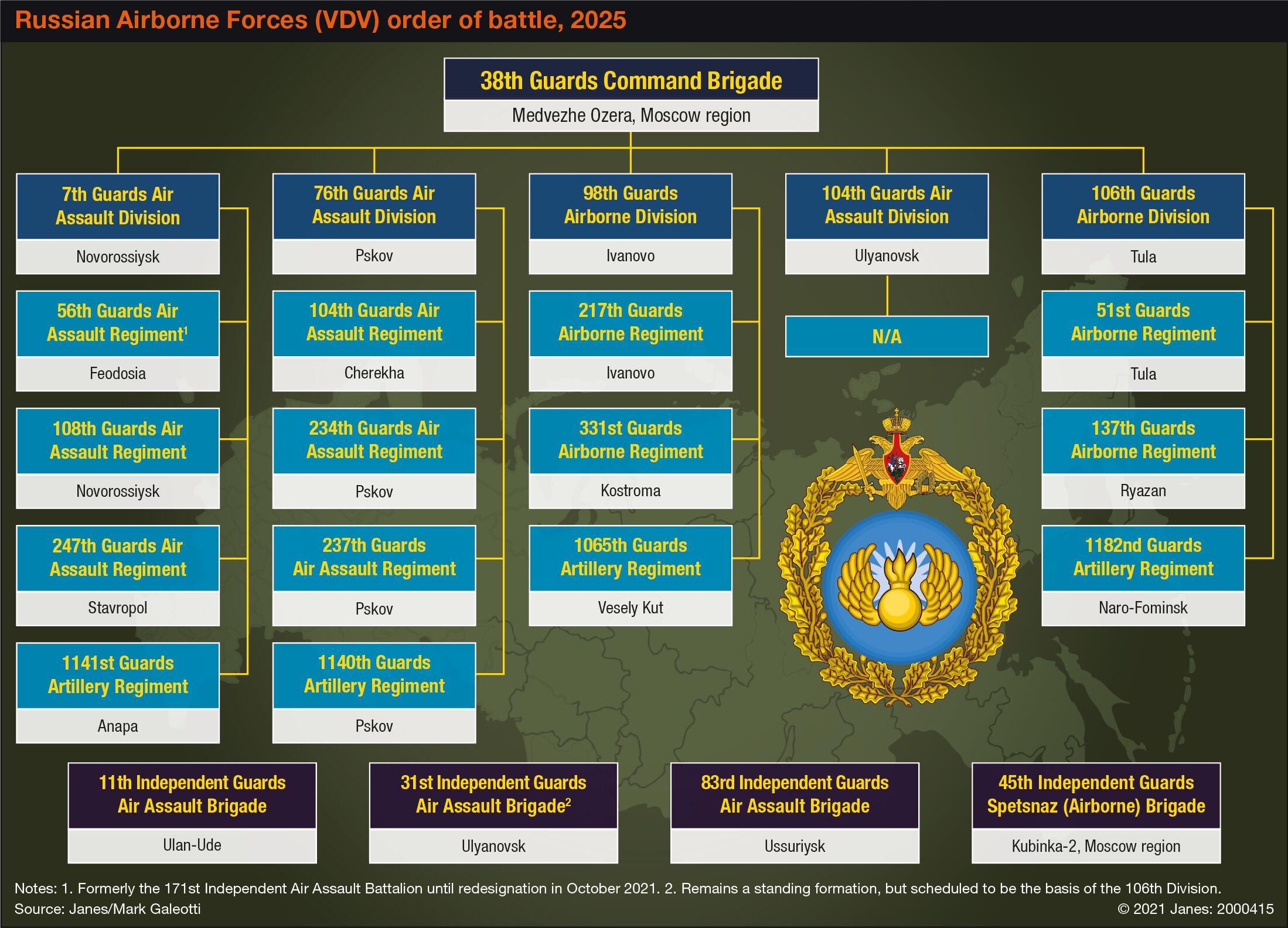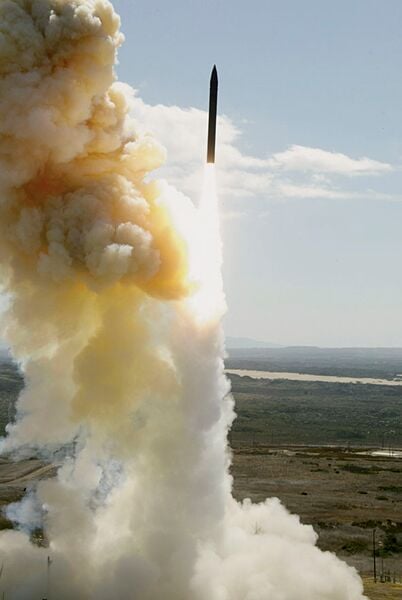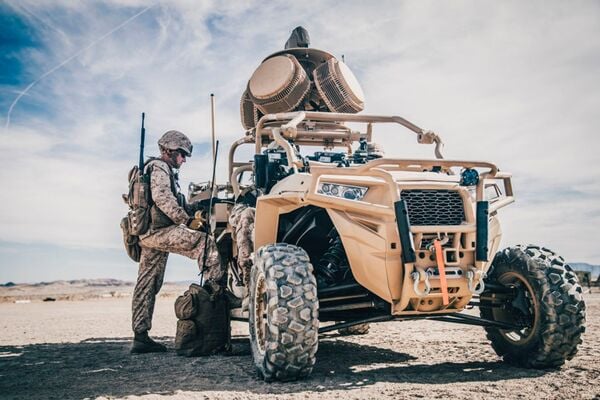- About
- Intara
- Capabilities
- Advisory
- Resources
- News
- Store
Russian airborne forces retool for expanded role
25 October 2021
by Mark Galeotti


Russian Airborne Forces (VDV) order of battle, 2025 (Janes/Mark Galeotti)
The ‘winged infantry' of Russia's Air Assault Troops (Vozdushno Desantniye Voyska: VDV) is an arm of service in its own right, with a strength of 45,000 paratroopers and rising, as well as a distinctive culture and esprit de corps . With its blue berets and blue striped telnyashka vests, the VDV is a fixture of parades and military open days, but it has long suffered from a tension in its roles.
Historically, parachute divisions were envisaged as strategic forces at the disposal of the General Staff, while air assault units were operational forces supporting Military District commands. However, in practice they were repeatedly – from Afghanistan to Chechnya – pressed into service as light infantry because they had the toughness and willingness to act with the initiative that a mission demanded.
Lockheed Martin snags multibillion-dollar NGI contract
16 April 2024
by Meredith Roaten


The Ground-Based Interceptor was launched from Vandenberg Air Force Base in California to simulate a combat launch from Fort Greely in Alaska. (Missile Defense Agency)
The Next Generation Interceptor (NGI) competition has come to an end as Lockheed Martin was selected as the prime to continue development of the weapon through critical design review (CDR), all-up round qualification, integration with the Ground-Based Midcourse Defense (GMD) system, and flight testing, the US Missile Defense Agency (MDA) announced on 15 April.
While no dollar amount was attached to initial statements on the contract, the Pentagon's Cost Assessment and Program Evaluation (CAPE) said in a 2021 report that it expected NGI to accrue roughly USD17.7 billion in contract costs. The downselect for Lockheed Martin will lead to a follow-on production and emplacement contract to support initial operational capability for NGI by the fourth quarter of fiscal year (FY) 2028, according to the announcement.
The MDA cited “technical maturity”, “technical rigor” in the design process, and contract-provided performance date as key factors that supported its decision.
Lieutenant General Heath Collins, director of the MDA, called the decision “very difficult” in a statement but said the agency was “confident”.
USMC plans to buy high-power ULTV variant
11 April 2024
by Aaron Lin


A marine programs a counter-unmanned aircraft system on a Light Marine Air Defense Integrated System (LMADIS) during a predeployment training exercise at Marine Corps Air Ground Combat Center, Twentynine Palms, California. (US Marine Corps)
The Ultra Light Tactical Vehicle (ULTV) programme – a US Marine Corps (USMC) replacement for the ageing Utility Task Vehicle (UTV) – will now include a variant with more exportable power, according to Janes analysis of budget documents.
The fiscal year (FY) 2025 budget request is the first time the ULTV-High Power (ULTV-HP) has funding for procurement, adding up to roughly USD5.99 million for 40 vehicles in that year. USMC justification documents indicate that it “provides exportable electrical power generation in support of the requirements for [the] kill web integrating system”.
Feature: Arctic formations taking shape in US Army
02 April 2024
by Meredith Roaten


A convoy of Cold Weather All-Terrain Vehicles perform command-and-control operations for the Joint Pacific Multinational Readiness Center training rotation in Fort Greely, Alaska. (Janes/Meredith Roaten)
Life in the Arctic can shift from -40ºF with 20 to 30 mph winds one week to the snow melting away as temperatures climb closer to 40ºF every day the next week. This kind of chaos makes the Joint Pacific Multinational Readiness Center (JPMRC) 24-02 training rotation an excellent trial for new US Army equipment and operations in contested environments, top service officials told Janes .
Investment in the region has remained stagnant, but nonetheless, formations in the region like the 11th Airborne Division are trying to grow beyond a support capacity and embrace the Arctic warfare mission described in Department of Defense (DoD)- and service-level strategies for addressing the growing threat of a contested Arctic.
The ‘winged infantry' of Russia's Air Assault Troops (Vozdushno Desantniye Voyska: VDV) is an arm of...
Latest Podcasts
A focus on Libya
In this podcast Janes senior analyst James Trigg, joins Harry Kemsley and Sean Corbett to discuss Libya. Historic civil and political unrest have made it a country of interest globally for decades. Whilst other conflicts and world events have fo...
Listen nowJanes Case Studies
Using Janes Intara to build a common intelligence picture: Russian build up on the Ukrainian border
View Case StudyNews Categories
 Land Details
Land Details